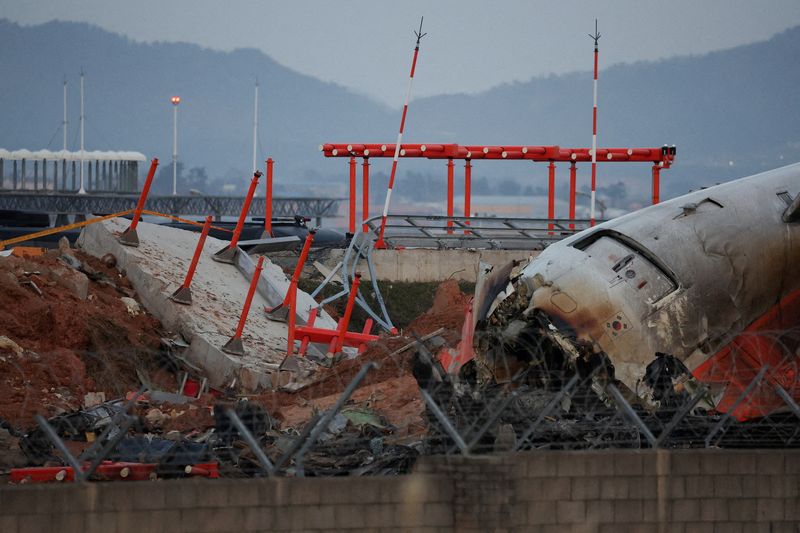By Jack Kim
SEOUL (Reuters) – South Korea’s authorities investigating final month’s Jeju Air airplane crash have submitted a preliminary accident report back to the U.N. aviation company and to the authorities of america, France and Thailand, an official mentioned on Monday.
The investigation into the deadliest air catastrophe on the nation’s soil stays ongoing, the report made obtainable on Monday mentioned, targeted on the position of “bird strike” and involving an evaluation of the engines and the “localiser” touchdown steerage construction.
“These all-out investigation activities aim to determine the accurate cause of the accident,” it mentioned.
The Worldwide Civil Aviation Group (ICAO), the U.N. company, requires accident investigators to supply a preliminary report inside 30 days of the accident and encourages a ultimate report back to be made public inside 12 months.
The Boeing (NYSE:) 737-800 jet, from Bangkok and scheduled to reach at Muan Worldwide Airport, overshot the runway because it made an emergency stomach touchdown and crashed into the localiser construction, killing all however two of the 181 individuals and crew members on board on Dec. 29.
The localiser aids navigation of an plane making an method to the runway, and the construction constructed of strengthened concrete and earth at Muan airport supporting the system’s antennae was seemingly a reason for the catastrophe, specialists have mentioned.
The report highlighted a lot of the preliminary findings by the South Korean investigators that was shared with the households of the victims on Saturday, together with the pilots discussing a flock of birds they noticed on its ultimate method.
The precise time of a chicken strike reported by the pilots stays unconfirmed, the accident report mentioned, however the plane “made an emergency declaration (Mayday x 3) for a bird strike
during a go-around.”
“Both engines were examined, and feathers and bird blood stains were found on each,” it mentioned.

“After the crash into the embankment, fire and a partial explosion occurred. Both engines were buried in the embankment’s soil mound, and the fore fuselage scattered up to 30-200 meters from the embankment,” it mentioned.
The report doesn’t say what could have led to the 2 information recorders to cease recording concurrently simply earlier than the pilots declared mayday. The plane was at an altitude of 498 ft (152 metres) flying at 161 knots (298 km/h or 185 mph) for the time being the blackboxes stopped recording, it mentioned.




